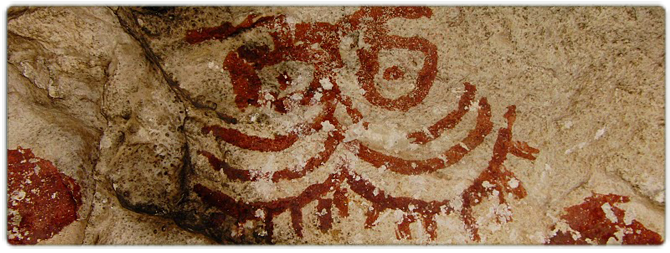Cave Paintings in Santiago-Pontones
Singular places
, Santiago Pontones
In the Segura and Cazorla mountains there are many caves and sheltered areas in which prehistoric paintings can be found. These paintings form part of the collection of Rock Art of the Iberian Mediterranean Basin and have been declared a World Heritage Site. The art in question dates back to an extremely distant period; approximately 10,000 BC. Imagining the lives of the people who lived in the Engarbo and Nacimiento caves, the latter of which has been little excavated, can help us to gain an insight into the transition from the Paleolithic to the Neolithic eras. This was a time of great changes in our way of life, as humans progressed from being hunter-gatherers to cultivators of vegetables and livestock and produced excess food they could store and thus prevent the need for constant migration.
The simple act of watching seeds germinate and plants grow, or observing animals and women giving birth, made the people of this era ask questions about the origins of life. They transferred these thoughts to the walls of caves through the representation of events related to their daily lives and the world of their beliefs. You can imagine one of the inhabitants of Nacimiento cave preparing his pigments, mixing them with animal fat, improvising a paintbrush with animal hair and starting to paint a particular scene. He would be thinking about painting a scene involving a hunt, or a fight, or a dance, in an attempt to narrate a particular moment or scene from his life.
Cave paintings are one of the most important manifestations of prehistoric culture, and have served to illuminate certain aspects of these early societies and shed light on their ways of life, belief systems and the flora and fauna of the time. But what motivated our ancestors to record representations of their daily lives and beliefs in caves and sheltered areas? Could these locations have been shrines?




